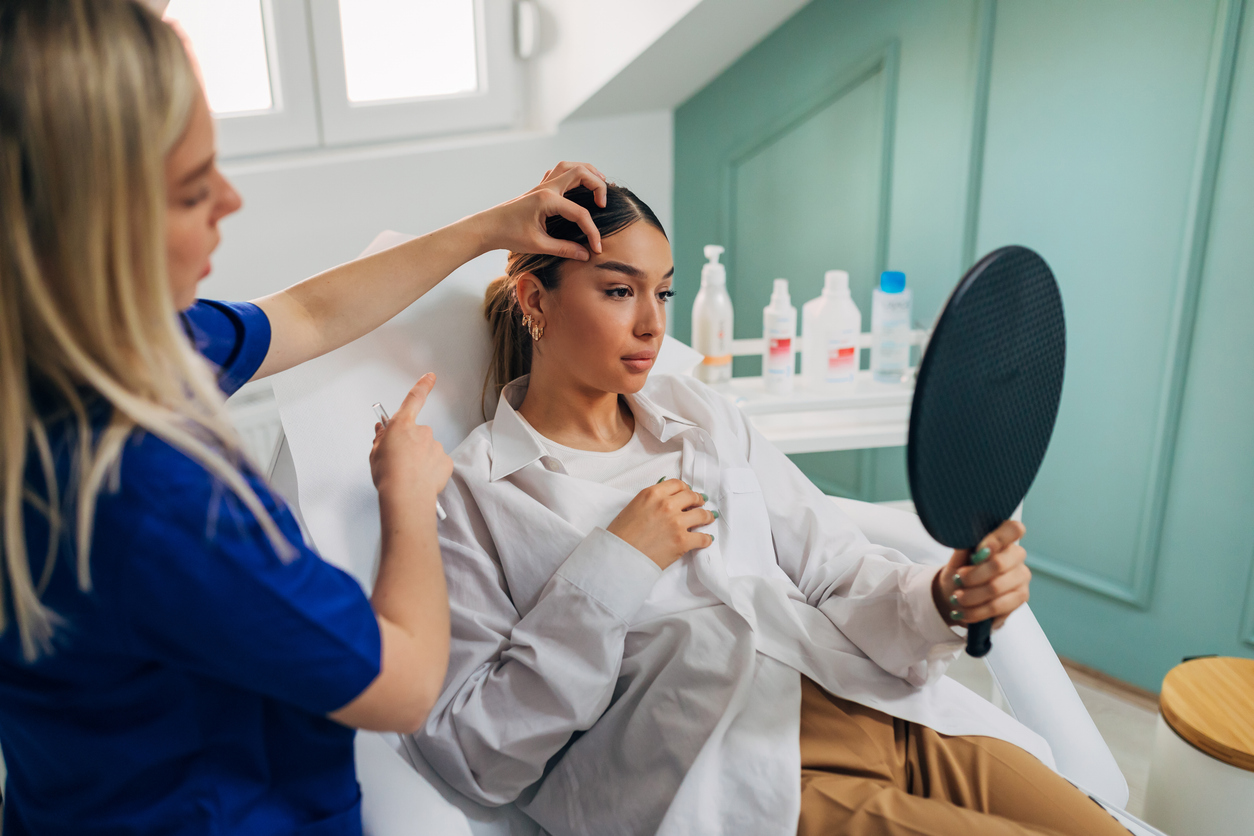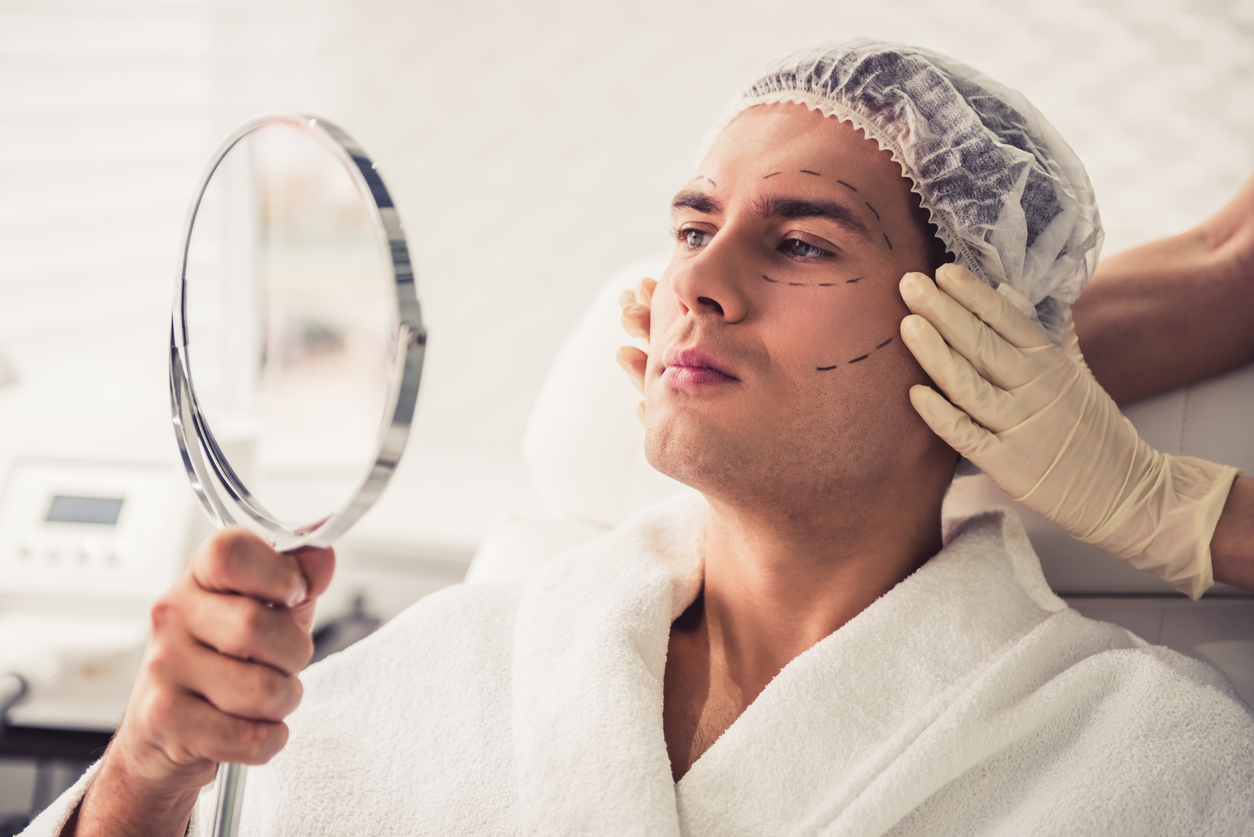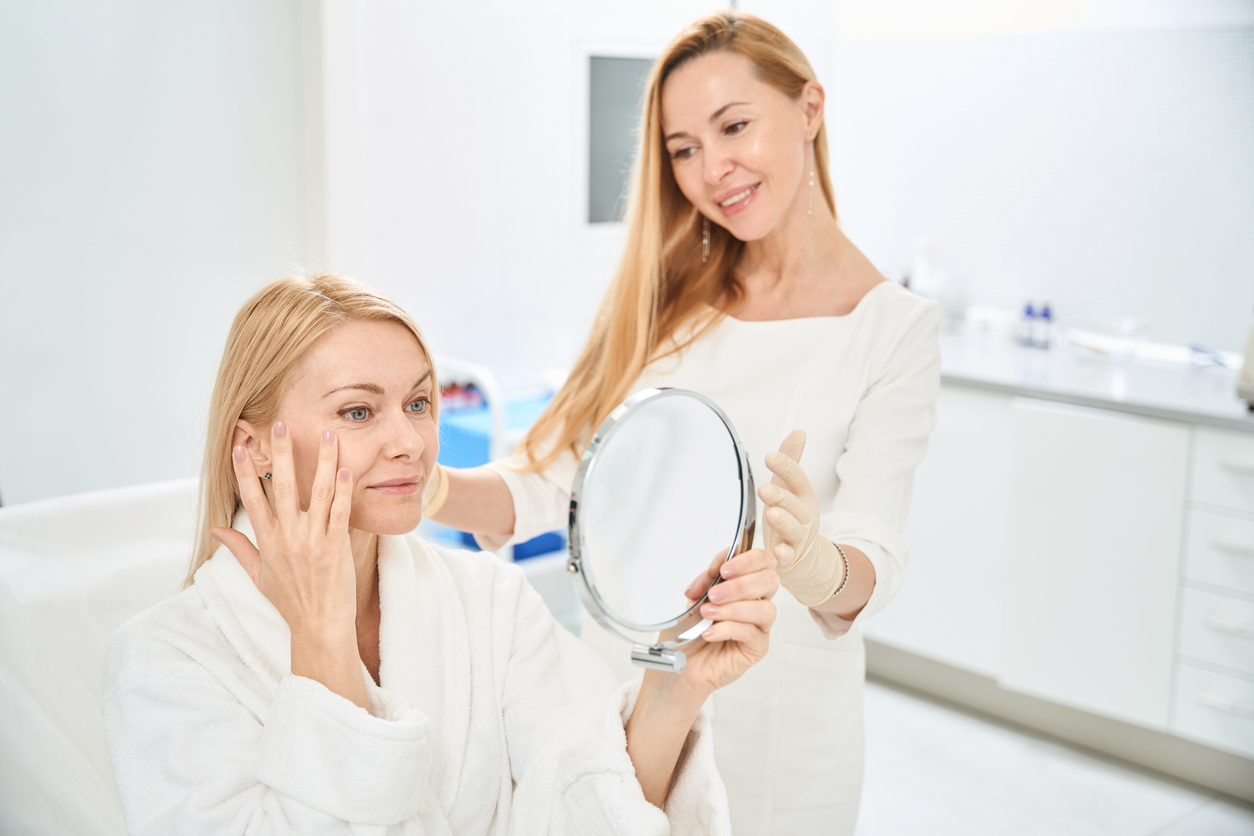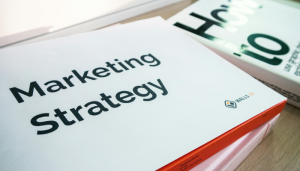Future of Aesthetic Market Trends to Watch in 2025

Table of Contents
ToggleAs we look towards 2025, the aesthetic market is buzzing with new trends and shifts that are set to redefine the industry. From the rise of regenerative treatments to the increasing demand for sustainable practises, the landscape is changing fast.
Businesses in this field are not just about beauty anymore; they’re about wellness, innovation, and adapting to new consumer needs. So, let’s dive into what 2025 has in store for the aesthetic market.
Key Takeaways
The aesthetic market is evolving with a focus on wellness and sustainability.
Regenerative treatments and non-surgical techniques are gaining popularity.
Social media and influencers continue to play a crucial role in marketing strategies.
Legal and regulatory compliance remains essential for business success.
Technological advancements like AI are transforming treatment personalisation.
Key Players Shaping the Aesthetic Market
Role of Dermatologists and Cosmetologists
For the aesthetic market, dermatologists and cosmetologists are at the forefront. These experts bring a wealth of knowledge and expertise, ensuring that clients receive safe and effective treatments.
Continuous education is crucial for these practitioners as they strive to stay informed about the latest aesthetic market trends and techniques. They not only perform procedures but also provide guidance and advice, helping clients make informed decisions about their skincare and beauty needs.
Impact of Specialised Clinics
Specialised clinics are increasingly becoming key players in the aesthetic industry. These clinics offer a focused approach, providing a range of services tailored to meet specific client needs.
They often employ state-of-the-art technology and innovative treatments, setting themselves apart from general beauty salons. Clients are drawn to these clinics for their specialised services and the expertise of their staff, making them a significant force in the market.
Collaboration with Product Manufacturers
The collaboration between aesthetic professionals and product manufacturers is a driving force behind innovation in the industry.
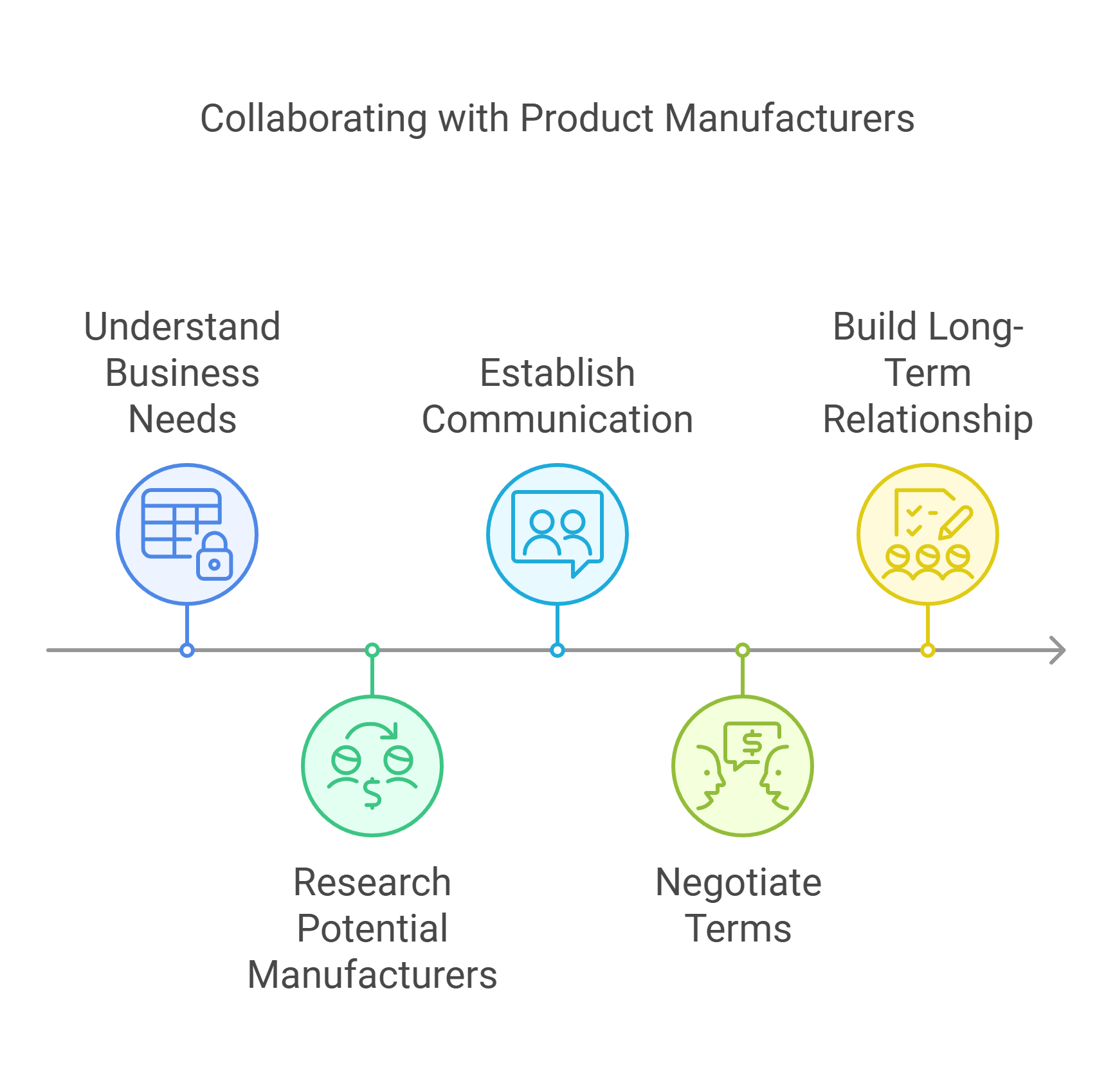
By working closely with manufacturers, clinics and practitioners can access the latest products and technologies, enhancing the quality of services they offer.
This partnership also allows for the development of customised solutions that cater to the unique needs of clients, thereby improving client satisfaction and loyalty.
Innovative Marketing Strategies for Aesthetic Businesses
Instagram and TikTok are great for finding potential clients on Social media. Regular posting and engaging content are crucial. Share before-and-after photos, client testimonials, and behind-the-scenes looks to keep your audience hooked.
Regular Updates: Post frequently to stay on your audience’s radar.
Engage with Followers: Respond to comments and messages to build a community.
Utilise Visual Content: Videos and images are more engaging than text.
Social media is more than just a marketing tool; it’s a way to connect with your clients on a personal level.
Collaborating with influencers can significantly boost your clinic’s visibility. Choose influencers who align with your brand values and have a following that matches your target demographic. Authenticity is key—your chosen influencer should genuinely believe in your services.
Select the Right Influencers: Look for those who share your brand’s ethos.
Create Authentic Content: Sponsored posts should feel genuine, not forced.
Measure Impact: Track the success of these collaborations to refine your strategy.
Client testimonials are a powerful tool for building trust. Potential clients often look to reviews and experiences of others before making a decision. Encourage satisfied clients to leave reviews on platforms like Google and your social media pages.
Highlight Testimonials: Make sure to add and feature them prominently on your website design and marketing materials.
Encourage Reviews: Ask happy clients to share their experiences.
Showcase Success Stories: Use testimonials to tell the story of your brand’s impact.
In a market where beauty brands need to adapt to changing consumer behaviours, these strategies can help aesthetic businesses not only survive but thrive.
Legal and Regulatory Framework in Aesthetic Practises
Understanding Industry Standards
Navigating the legal landscape of aesthetic practises can be a bit of a maze. In the UK, for instance, the Care Quality Commission (CQC) plays a pivotal role in ensuring clinics meet necessary standards.
If your clinic offers medical treatments like Botox or fillers, CQC registration isn’t just a formality—it’s a must. This registration doesn’t just keep you on the right side of the law; it also boosts your clinic’s credibility.
Navigating Legal Implications
Failing to register when required can have serious consequences. We’re talking hefty fines or clinic closure. It’s essential to be aware of your obligations to avoid these pitfalls.
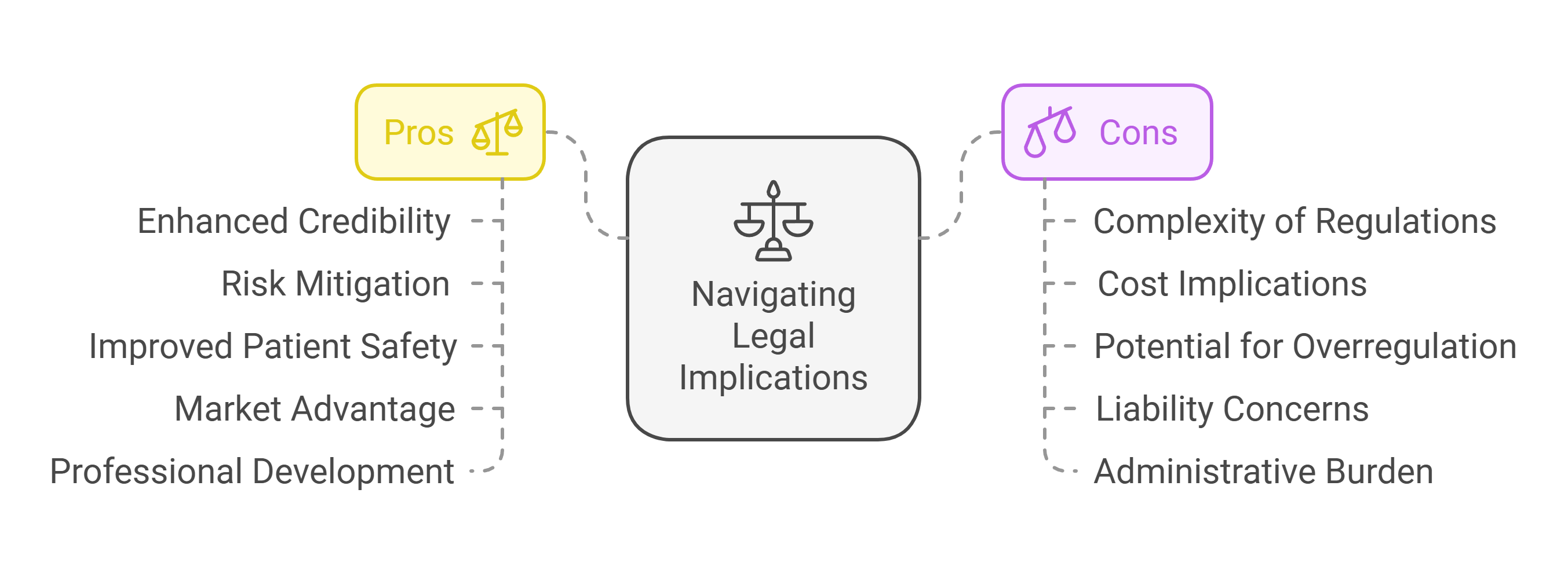
Non-compliance can not only lead to legal actions but also damage your reputation and trust with clients. Ensuring your clinic adheres to UK regulations with a comprehensive compliance checklist safeguards both your practise and your patients.
Ensuring Compliance for Success
Compliance isn’t just about ticking boxes; it’s about maintaining a high standard of care and safety. Here are a few things to consider:
Regular Audits: Conducting regular audits helps ensure that all procedures and protocols meet industry standards.
Staff Training: Continuous training is vital to keep up with the latest techniques and safety practises.
Patient Records: Keeping detailed and accurate records not only helps in compliance but also in delivering personalised care.
Compliance is more than a legal obligation; it’s a pathway to building trust with your patients and enhancing your clinic’s reputation.
Emerging Trends in Aesthetic Treatments
Rise of Regenerative Procedures
In 2025, the aesthetic industry is set to embrace regenerative procedures. These treatments, which harness the body’s natural healing processes, are becoming increasingly popular.
Bio-stimulating injectables, like PRP (Platelet-Rich Plasma) fillers, are gaining traction for their ability to offer long-lasting, natural results. The shift towards these methods reflects a broader preference for natural appearances over overly enhanced looks. Patients are increasingly opting for procedures that subtly enhance their features without overt changes.
Focus on Prerejuvenation
The concept of prerejuvenation is all about starting aesthetic treatments earlier to maintain youthful skin for longer. Younger generations, particularly Gen Z, are showing interest in preventative skincare and treatments.
This trend is not just about looking good now but ensuring skin health in the future. Light resurfacing treatments and hydrating boosters are becoming staples in the beauty routines of those in their 20s and 30s, aiming to delay signs of ageing.
Growth of Men's Aesthetic Treatments
Men are no longer on the sidelines when it comes to aesthetic treatments. There’s a growing acceptance and demand for procedures among men, breaking traditional stereotypes.
Treatments like laser hair removal, skin rejuvenation, and even injectables are becoming part of the male grooming routine. This shift is not just a trend but a significant expansion of the market demographic, as more men seek to enhance their appearance and boost their confidence.
The future of aesthetic treatments is not just about enhancing appearances but aligning with a holistic approach to wellness. This means looking good and feeling good, with treatments that support both physical and emotional well-being. The industry is moving towards solutions that integrate beauty with health, offering patients a comprehensive approach to self-care.
Technological Advancements in Aesthetic Market
Integration of AI in Treatments
In 2025, the aesthetic market is seeing a significant shift with the integration of AI in treatments. AI technology is not just a buzzword anymore; it’s actively transforming how treatments are planned and executed.
AI-driven diagnostics allow for precise skin analysis, helping practitioners tailor treatments to individual needs. Imagine a system that can predict outcomes based on skin type, age, and even lifestyle choices. That’s where we’re heading. AI is also enhancing non-invasive procedures, making them more effective and reducing recovery time.
Advancements in Non-Surgical Techniques
Non-surgical techniques are no longer just an alternative; they are becoming the preferred choice for many. From laser treatments to injectables, the focus is on achieving natural results with minimal downtime.
Examples of non-surgical techniques include:
Technique | Description |
|---|---|
Chemical Peels | Application of a chemical solution to exfoliate and remove dead skin cells, promoting smoother and clearer skin. |
Laser Skin Resurfacing | Use of laser technology to improve skin texture and tone by targeting blemishes, wrinkles, and scars. |
Microneedling | A procedure that uses small needles to create micro-injuries in the skin, stimulating collagen production for smoother, more youthful-looking skin. |
IPL (Intense Pulsed Light) Therapy | A light-based treatment used to reduce redness, pigmentation, and sun damage. |
Non-Surgical Body Contouring | Techniques like CoolSculpting or radiofrequency treatments that reduce fat and tighten the skin. |
Thread Lifts | A minimally invasive procedure using threads to lift and tighten sagging skin. |
HydraFacial | A multi-step facial treatment that cleanses, exfoliates, and hydrates the skin, leaving it refreshed and rejuvenated. |
These advancements mean that people can achieve their desired look without the need for invasive surgery.
Role of Data Analytics in Personalisation
Personalisation is the name of the game in today’s aesthetic market. Thanks to data analytics, practitioners can offer treatments that are not only effective but also uniquely suited to each client.
Data-driven insights allow for a deeper understanding of what works best for different skin types and conditions. This level of personalisation builds trust and ensures that clients feel valued, which is crucial for any aesthetic business looking to thrive.
Sustainability and Ethical Practises in Aesthetics
Eco-Friendly Product Innovations
The aesthetic industry is increasingly leaning towards eco-friendly products. Brands are now focusing on developing biodegradable packaging and sourcing ingredients sustainably.
This shift isn’t just about meeting regulatory demands; it’s about responding to consumer awareness. More clients are asking about the environmental impact of their treatments, pushing clinics to adapt.
Biodegradable Packaging: Many companies are transitioning to packaging that decomposes naturally, reducing landfill waste.
Sustainable Sourcing: Ingredients are being sourced responsibly, ensuring that local ecosystems remain unharmed.
Carbon Footprint Reduction: Efforts are made to lower emissions during production and distribution.
Ethical Considerations in Treatment
Ethical practises in aesthetics are gaining traction, with a focus on transparency and client safety. Clinics are encouraged to provide clear information about the procedures, risks, and expected outcomes. This not only builds trust but also aligns with a broader commitment to ethical standards.
Transparent Communication: Clinics must ensure that clients are fully informed before any procedure.
Qualified Practitioners: Only certified professionals should perform treatments, ensuring safety and efficacy.
Patient-Centric Approach: Focus on the needs and well-being of the client rather than purely financial gain.
Promoting Sustainable Business Models
Sustainability in business models is becoming a priority. Aesthetic clinics are exploring ways to operate more sustainably, from reducing waste to implementing energy-efficient systems. These changes not only benefit the environment but can also lead to cost savings in the long run.
Energy Efficiency: Implementing energy-saving measures in clinics can significantly reduce operational costs.
Waste Management: Proper disposal and recycling practises help minimise environmental impact.
Sustainable Partnerships: Collaborating with other eco-conscious brands and suppliers reinforces a commitment to sustainability.
Embracing sustainability and ethical practises in aesthetics isn’t just a trend; it’s a necessary evolution. As the industry continues to grow, aligning business operations with environmental and ethical standards will be key to long-term success.
Conclusion
As we look towards 2025, the aesthetic market is set to continue its dynamic evolution, driven by innovation and changing consumer preferences. The key players, from dermatologists to cosmetologists, will need to stay informed and adaptable, embracing new technologies and techniques to meet the growing demand for non-invasive treatments for aesthetic clinics.
Social media and influencer marketing will remain crucial for reaching a wider audience, while legal compliance and continuous education will ensure safe and effective practises. By staying ahead of these trends and focusing on client needs, businesses in the aesthetic industry can thrive, offering not just beauty, but a holistic approach to wellness and self-care. The future holds exciting opportunities for those ready to innovate and adapt, making the aesthetic market a vibrant and promising field.
Frequently Asked Questions
Who are the main people in the aesthetic market?
The main people in the aesthetic market are dermatologists, cosmetologists, and special clinics. They all work together to make sure clients get safe and good treatments.
Why is social media important for aesthetic businesses?
Social media is important because it helps aesthetic businesses get noticed. By sharing pictures and stories, they can show what they do and attract more clients.
What are some new trends in aesthetic treatments?
Some new trends include treatments that help the skin heal itself, like using special blood cells, and treatments that help people look younger before they start to age. More men are also getting treatments now.
How does technology help in aesthetic treatments?
Technology helps by using smart computers to make treatments better and by offering new ways to do treatments without surgery. It also helps personalise treatments for each person.
Why is it important to follow the rules in aesthetic practises?
Following the rules is important to make sure that treatments are safe and done right. It helps build trust with clients and keeps the business running smoothly.
What does it mean to have eco-friendly products in aesthetics?
Having eco-friendly products means using items that are good for the environment. This includes using natural ingredients and reducing waste, which helps keep the planet healthy.

